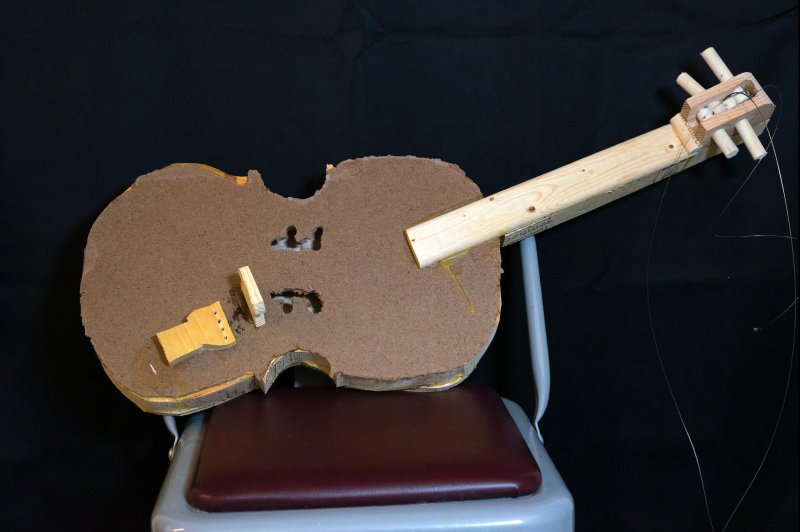
A 2022 sculpture titled 'Broken Violin' by Adam Schrader is pictured at Brooklyn College in New York City. The arts and culture sectors contributed more than $1 trillion to the United States' gross domestic product in 2021, as the arts grew quicker than the wider economy, officials said in a new report. Photo by Adam Schrader
March 19 (UPI) -- The arts and culture sectors contributed more than $1 trillion to the United States' gross domestic product in 2021, as the arts grew quicker than the wider economy, officials said in a new report.
The U.S. Bureau of Economic Analysis and the National Endowment for the Arts released a report Wednesday which found that arts industries made up 4.4% of the GDP and that the overall economic value of the arts grew by 13.7%. The wider economy grew by just 5.9% from 2020 to 2021.
"This annual report from the NEA and BEA underscores that arts and culture are an essential part of the American economy. It is similarly apparent, however, that the sector still faces tremendous hardships due to COVID-19," Maria Rosario Jackson, the chair of the NEA, said in a statement.
"Because the data reflect the economic activity of nonprofit and for-profit organizations alike, it's important to recognize the distinctive contributions both make in ensuring a vibrant and expansive arts and cultural sector."
The report found that 22 of the 35 industries in the arts sector had returned to or performed better than pre-pandemic levels by the end of 2021.
Those industries included web publishing and streaming services, which climbed 27.3% from 2020 to 2021 for an economic contribution of more than $171 billion, largely due to being composed largely of for-profit companies, unlike other arts industries which are made up largely of nonprofits.
Other arts industries that saw growth beyond 2019 levels before the pandemic included creative advertising, art retail, performing arts presenters and museums that are not government-run.
The industry of independent artists, writers and performers grew in 2021 from their 2020 levels but have not yet returned to pre-pandemic numbers.
The value of independent artists to the economy was $41 billion before the pandemic, adjusted for inflation, but just $29 billion in 2020. That figure rose to $33.5 billion in 2021.
Performing arts organizations similarly dropped during the pandemic, contributing just $9.5 billion to the economy in 2020 but growing to $11 million in 2021.
RELATED
Biden urges expanded FDIC authority over executive mismanagement in banking
Similarly, fine arts schools and musical instrument manufacturing dropped off during the pandemic and partly bounced back.
Of the dozens of industries in the arts sector, only two saw "persistent declines" from 2019 to 2021 including arts-related construction, such as the building of new museums, and philanthropic giving.
The report, which also tracks employment at the state level, found that 49 states saw increases in arts and culture employment from 2020 to 2021 though none have reached pre-pandemic levels.
The Art Newspaper noted that the report's focus on jobs only accounts for employees on payroll and may not have included data from arts establishments that relied on self-employed contractors.
Similarly, fine arts schools and musical instrument manufacturing dropped off during the pandemic and partly bounced back.
Of the dozens of industries in the arts sector, only two saw "persistent declines" from 2019 to 2021 including arts-related construction, such as the building of new museums, and philanthropic giving.
The report, which also tracks employment at the state level, found that 49 states saw increases in arts and culture employment from 2020 to 2021 though none have reached pre-pandemic levels.
The Art Newspaper noted that the report's focus on jobs only accounts for employees on payroll and may not have included data from arts establishments that relied on self-employed contractors.
No comments:
Post a Comment